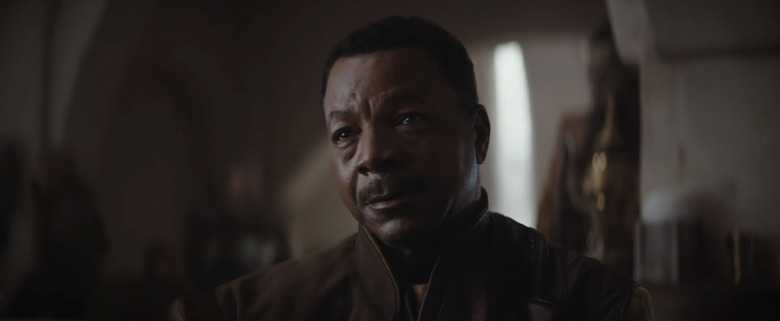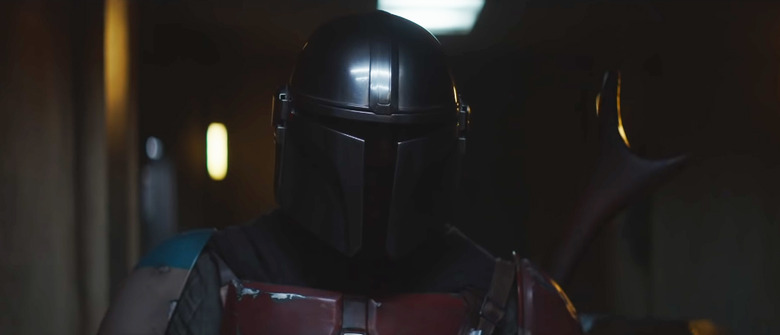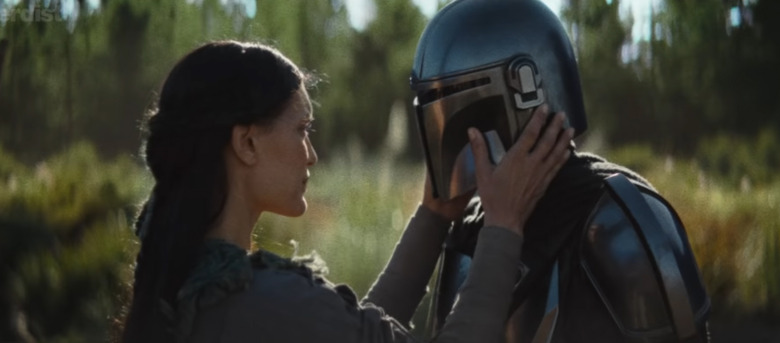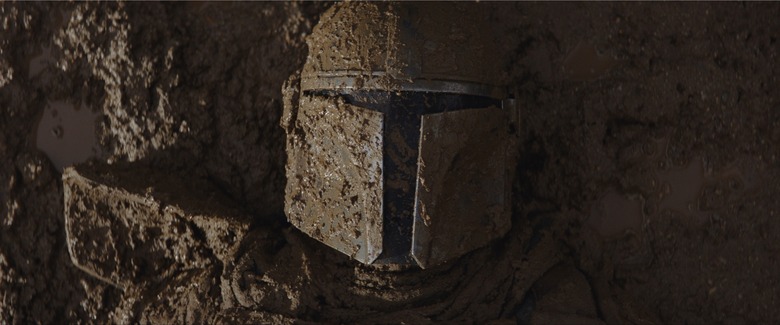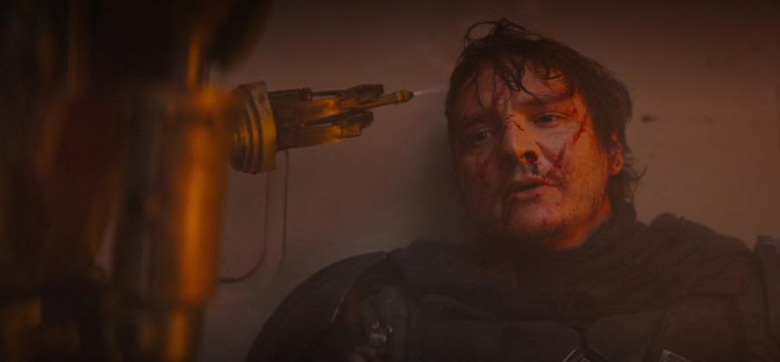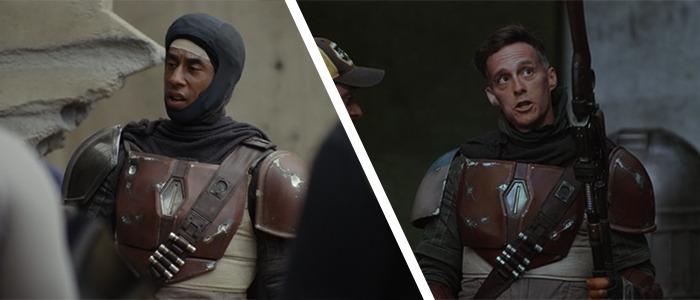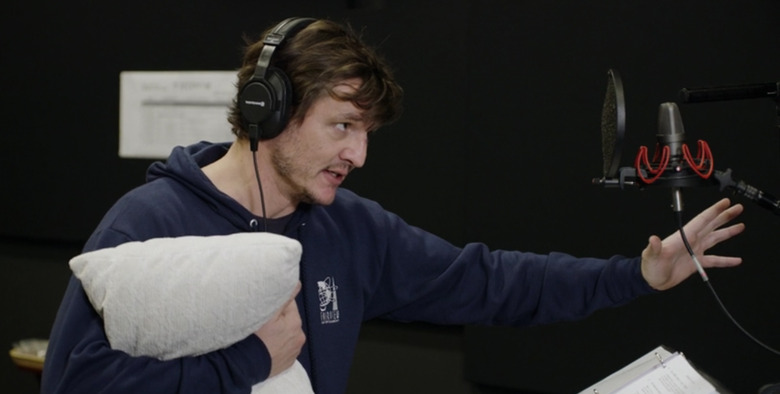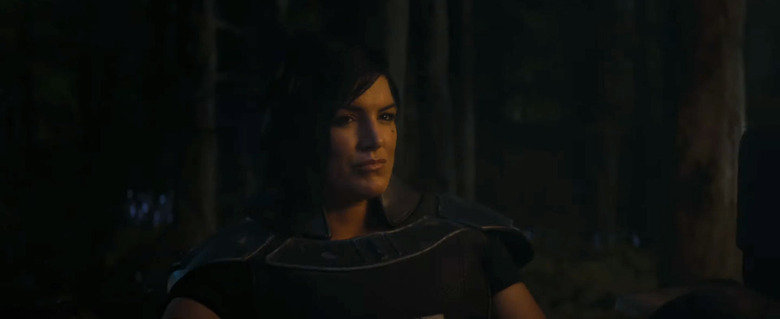'The Mandalorian' Almost Had Carl Weathers Play An Alien Character Who Died In Chapter 3
The third episode of Disney Gallery: The Mandalorian arrived on Disney+ today, and with it comes a focus on the show's small but stellar ensemble cast, which introduces a batch of memorable new characters into the live-action Star Wars universe.
Pedro Pascal, Gina Carano and Carl Weathers sat down with executive producers Jon Favreau and Dave Filoni to discuss their experience working on The Mandalorian, get their perspective on Star Wars and share some stories from behind the scenes. Easily the most fascinating reveal from this particular episode involves learning that not only was Carl Weathers' character Greef Karga originally designed for him to be in alien prosthetic make-up, but he was going to be killed off in "Chapter 3: The Sin."Get more details on that and all the finer points of the new episode of Disney Gallery: The Mandalorian.
Greef Karga Used to Be Alien Who Got Killed Early On
Carl Weathers says that he sees Greef Karga as a combination of Orson Wells and John Huston, but in a way where the confidence and presence he carries doesn't come from a lot of effort; it's just naturally who he is. But Weathers almost didn't get to bring that demeanor to life, because he was meant to be covered in alien make-up and prosthetic pieces.
The original idea for Greef Karga was for him to be a short-lived character, still played by Carl Weathers. The job was even pitched to Weathers as having him do Favreau a favor, mostly because he wasn't really doing much acting anymore. But after Favreau and Filoni had some trouble directing extras in full-on alien masks and make-up during a camera test, and once they heard and saw Weathers read some of the lines, they decided that Greef Karga needed to be human.
However, that wasn't the only change made to Greef Karga's character. He was originally supposed to meet his maker at the end of "Chapter 3: The Sin," when Mando shoots him just before making his final getaway with The Child. Instead, the role expanded, which was really significant for the show since Greef ended up being a big piece of the season finale.
The Mandalorian and Boba Fett Take Cues from Clint Eastwood
This isn't exactly new information for the hardcore Star Wars fans out there, but for some of you who maybe aren't initiated, this is interesting stuff. Boba Fett's character design was inspired by Clint Eastwood's The Man With No Name from spaghetti westerns like The Good, the Bad and the Ugly. Subtle mannerisms like the way he nods at characters and even his intimidating stance and way of walking were lifted from that character, not to mention the fact that the armor has the same color scheme as The Man's poncho. There's a spur-jingling sound when he walks.
On top of that, even the helmet that Boba Fett wears, which is the general design of Mandalorian helmets, is inspired by The Man with No Name, with the brim of his hat often tilted low to sit parallel with his menacing eyes. Mando inherits that style with the horizontal line of his mask standing in for the hat brim, and parts of the character design are even more accentuated in this series, thanks to the fact that this feels more like a western than other parts of the original Star Wars trilogy.
Do All Mandalorians Really Keep Their Helmets On?
There's an interesting moment in this episode where Bryce Dallas Howard says "Mandalorians, and as far as our Mandalorian is aware, cannot reveal their faces. Our Mandalorian subscribes to this." This would seem to imply that other Mandalorians out there may not believe the same. After all, we know that characters like Sabine and Ursa Wren and Bo-Katan Kryze don't subscribe to that belief, and they were seen as recently as a couple years before The Mandalorian without their helmets. So what is it about this particular faction that has them acting this way? Perhaps this will be addressed in the second season.
Mando's Helmet Created a Challenge for Storytelling
The Mandalorian directors Deborah Chow and Rick Famuyiwa discussed the challenges of portraying emotions coming from a character whose face is hidden behind a helmet. Even co-star Carl Weathers found it difficult to engage with the character as an actor.
Chow's solution to this problem was to allow for a moment where everything felt like it stopped, and Mando kept still, so that when he next moves, that gesture, whatever it may be, clearly has more significance and weight to it. Meanwhile, Famuyiwa thinks that maybe the audience projects their own feelings about what just happened or what is happening onto The Mandalorian.
Meawhile, Weathers admitted that he occasionally had a tough time doing scenes with Mando. Weathers talks about how he responds to the performances of his co-stars, and that can be incredibly difficult when you can't see their face and their movement is limited and calculated. What would normally give him some guidance as an actor for how to respond or subtly adjust his own performance was totally ruined by the helmet. Weathers' own fix was to listen more intently to Mando's voice in order to respond properly to not just what he's saying, but how he's saying it.
Pedro Pascal Injured Himself in a Very Clumsy Way
While talking about the sequence where Mando has been injured by an explosion and thus forced to remove his helmet or die, Pedro Pascal revealed that he actually injured himself immediately after getting the bloody make-up done in order to shoot that scene. Pascal was reading his script pages as he left the trailer and walked face-first right into a piece of plywood. The injury forced him to go to the hospital in full bloody make-up, prompting the staff to think he was injured worse than he really was. In the end, he had to get seven stitches, and he came back to set to continue shooting the same day. What a pro!
Mando Has Two Stunt Doubles
The documentary briefly shines a light on the two stuntmen who help give The Mandalorian his physicality, especially in action sequences. There's Brendan Wayne (right), who is responsible for the gunslinging side of The Mandalorian when they need a quick draw or an expert marksman. And there's also Lateef Crowder, who is an expert in the Afro-Brazilian martial art Capoeira as well as Jiu-Jitsu, and he deals with some of the fast-paced hand-to-hand combat action sequences.
A Small Pillow Doubled for Baby Yoda
There's a quick sequence in this episode where we see Pedro Pascal doing voiceover recording for his dialogue as The Mandalorian. In some quick shots of Pascal doing dialogue, he occasionally mimes the pistols he's holding in a face-off or whatever Mando is doing in a scene in order to be in the right physical space. One such instance includes him holding a small pillow in a scene where he's holding Baby Yoda. It's a shame they couldn't afford a stunt double for the little guy.
Gina Carano Didn't Have to Audition for Cara Dune
Jon Favreau had seen the movie Haywire and trusted the movie's director, Steven Soderbergh, in seeing talent in Gina Carano. Naturally, she was his first and only choice to play Cara Dune in The Mandalorian. Pedro Pascal says that when he had his first meeting about the show, Gina Carano was already included in the story illustrations as if she had the part. There was no audition, and Gina Carano merely received a phone call to offer her the role. That's how we got this badass character, and if you need any proof of how strong she is, in that moment in the finale where she has to pick up a limp, knocked out Mando off the ground, she does the heavy lifting herself.

